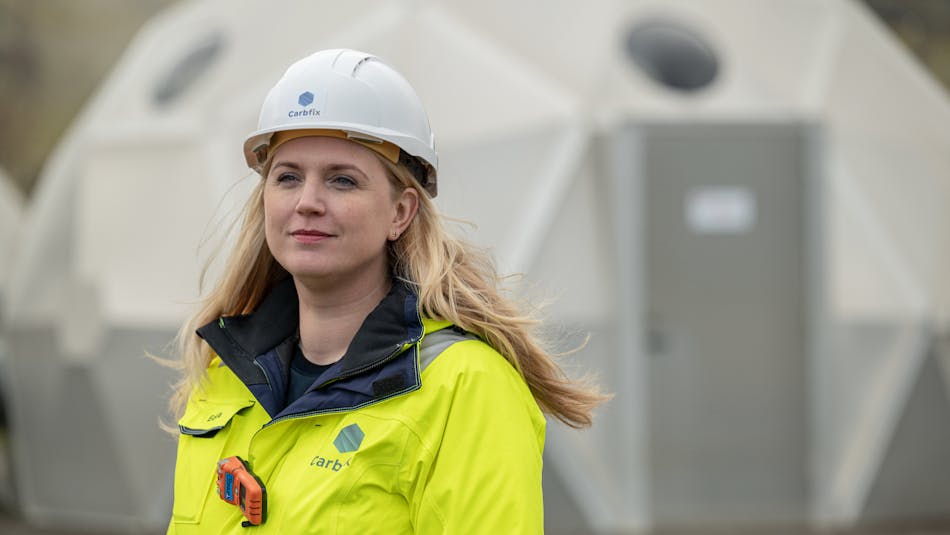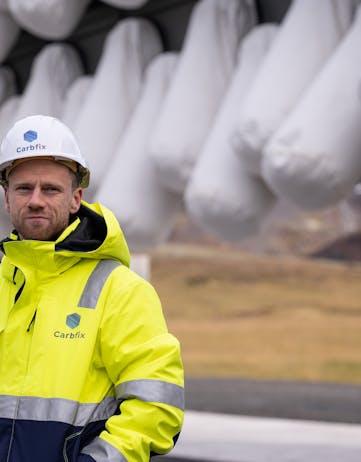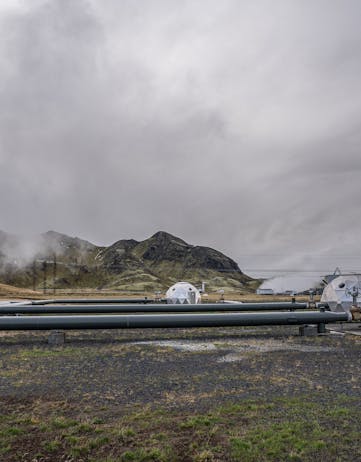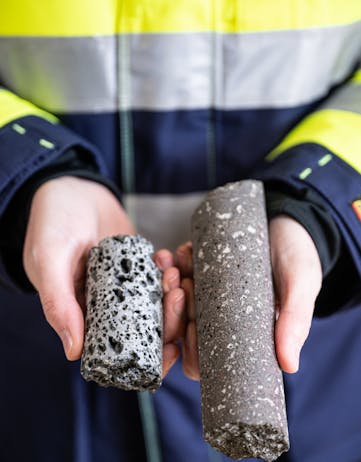
Finding common ground for storing carbon underground
The delegates who assembled in Glasgow at COP26 want every country to hit net-zero emissions by 2050. The summit's success will depend much on how individual countries reduce emissions through their nationally determined contributions (NDCs). And no two countries are alike.
Iceland released its updated NDCs in February 2021, and in its submission, the country is enhancing its NDC commitment to at least 55% net greenhouse gas emissions reduction by 2030 compared to 2005 levels. In the report, Iceland states that,
"The goal of carbon neutrality is to be reached by cutting emissions in all sectors, and by increasing carbon removals from the atmosphere, including by restoration, revegetation, afforestation, and carbon capture and mineralization in rock formations (Carbfix)."
As you read this, not far from Reykjavík, Carbfix is already extracting CO2 through several mechanisms and turning it into minerals deep underground. Carbfix captures the gases in various ways and pumps them into scrubbers that shower the gasses with pure water. The gasses dissolve into the water and together are injected deep into the subsurface basaltic rock formations — which there are plenty of in Iceland — where it transforms into stable minerals over approximately two years. There, the carbon will be "locked" underground for the long term. The Carbfix Project was launched in 2006 by four founding partners, Reykjavík Energy, the University of Iceland, CNRS of Toulouse, France, and the Earth Institute at Columbia University. Universities and research institutes have also participated in projects under EU-funded schemes, including Amphos 21, Climeworks, and the University of Copenhagen. Carbfix's technology is a safe and proven process that has undergone rigorous testing and is ready to scale up CO2 sequestration. In collaboration with its partners, Carbfix is working on various carbon capture, utilization, and storage (CCUS) methods to implement at the source of large industrial CO2 emitters, such as concrete and steel plants.
Silverstone Project
While geothermal is considered "green energy," there are some CO2 emissions. Geothermal powerplants tap into the heat underground, typically in volcanic zones, but the byproduct is the release of gases from the depths. It is most efficient to capture the CO2 (and other acid gases) from geothermal wells directly at the source.
In August 2021, Carbfix and ON Power (a subsidiary of Reykjavík Energy) received a grant for EUR 3.9 million (USD 4.5 million) from the EU Innovation Fund for the Silverstone Carbon Capture Project. The goal of the Silverstone is to achieve net-zero emissions from the Hellisheidi plant. An optimized and scaled-up Carbfix capture plant will be designed to be entirely self-sufficient and completely independent of any external raw materials to achieve these ends. The plant is scheduled to launch in 2025. It will have the capacity to sequester 34,000 tons of CO2 annually and capture almost 95% of the plant's total CO2 emissions. At peak efficiency, Silverstone will significantly contribute towards Iceland's goal of a 55%-reduction of carbon dioxide emissions by 2030.
Coda Storage Terminal
The next leap for Carbfix is to work with its partners to establish an onshore underground CO2 storage facility in Iceland. The Coda Terminal will be an economical carbon storage solution compared to conventional offshore storage in former gas and oil wells. thanks to Iceland's geological basalt formation. Carriers, such as Dan-Unity, with experience in liquid gas transport, can use existing infrastructure to ship carbon to the Coda terminal from Northern Europe. Storage is to start in 2025, with an initial capacity of 300 kilotons of CO2/year to be scaled up by three megatons of CO2 per year. Even with shipping costs, Carbfix believes that large emitting companies will invest in extra measures to ensure safe, secure, and lasting carbon sequestration in Iceland. All that is needed is water, electricity, CO2, and the right geological conditions. Carbfix will run the Coda Terminal on 100% renewable energy.
Carbfix + seawater
There is no way around it. The Carbfix method uses copious amounts of water to scrub CO2 out of emissions and inject it into basaltic rocks. Fortunately, there is plenty of fresh water in Iceland, and Carbfix has been using that. However, freshwater resources are not as abundant in most locations. In June 2021, a research paper published by Martin Voigt et al. confirms that substituting with seawater for long-term CO2 storage is possible. The implications of the research are tremendous. Globally, there are many places where geological conditions are ideal for long-term CO2 storage that lack freshwater. Seawater may open the metaphorical floodgates for CO2 storage in arid places like India, Saudi Arabia, and the western United States. Experiments with seawater will continue with a field injection project in 2022.
While CCUS cannot store all the world's excess CO2, projects such as Silverstone, Coda, and using seawater to sequester CO2 will be essential technologies to alleviate greenhouse gasses — particularly for stubborn emissions industries such as power generation and steel making. Iceland is well-positioned to be a CCUS center with abundant water, clean energy, ideal geological conditions, and perhaps most importantly, the know-how to get the job done.


